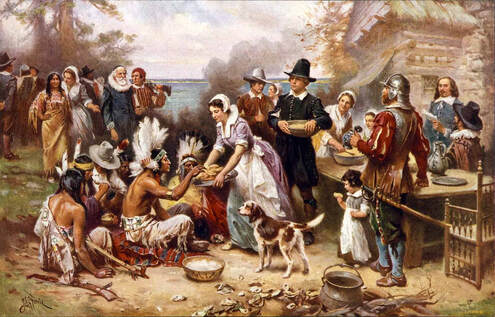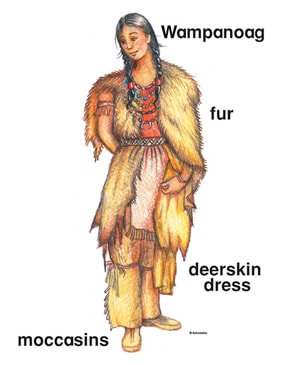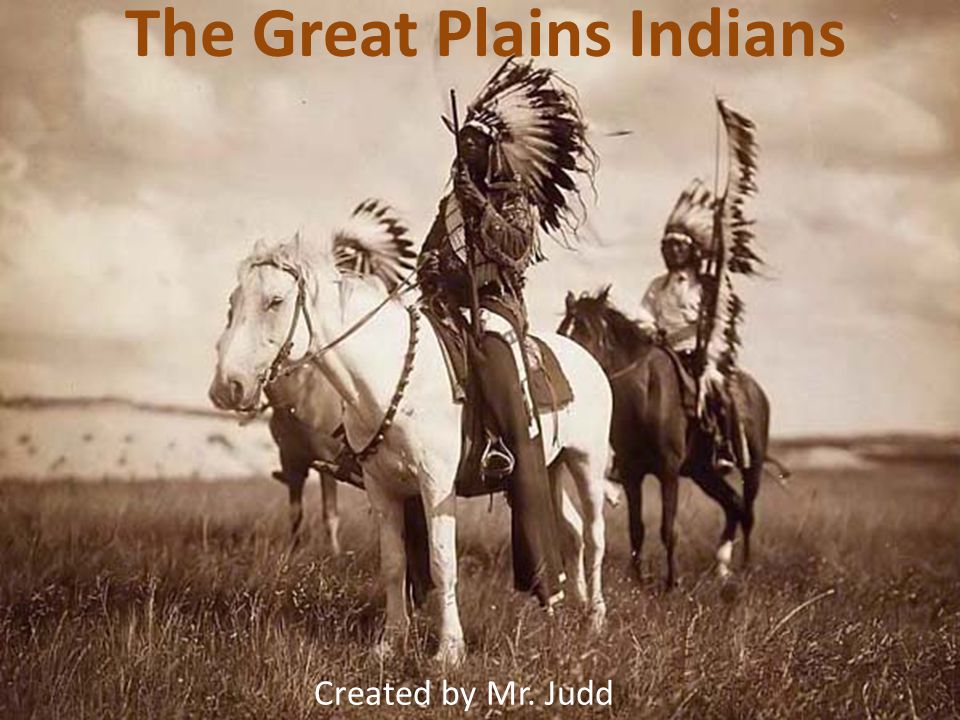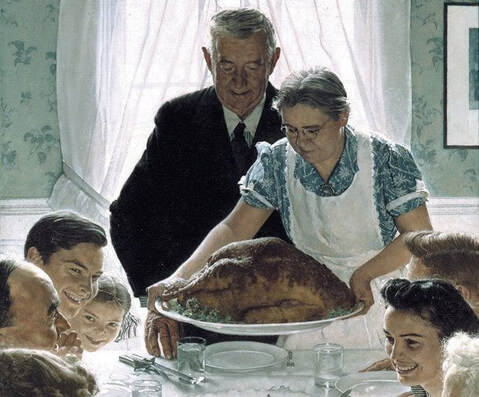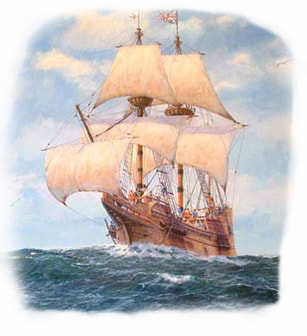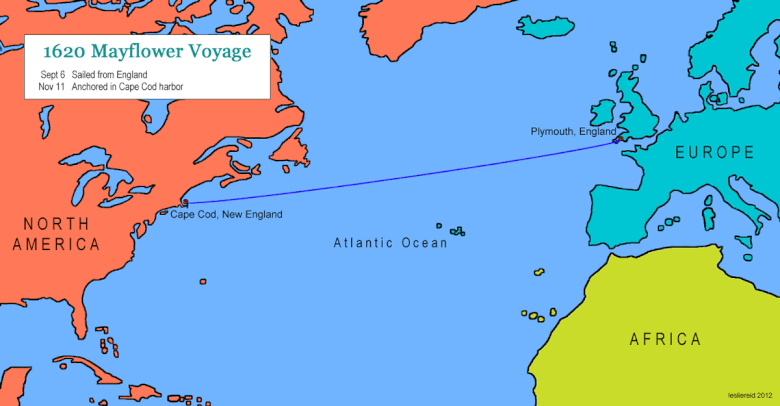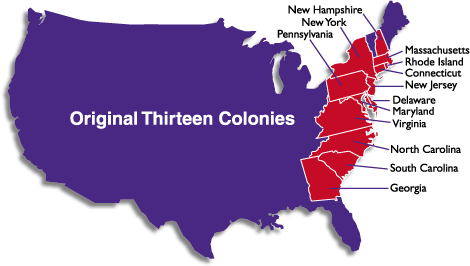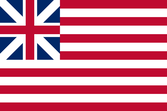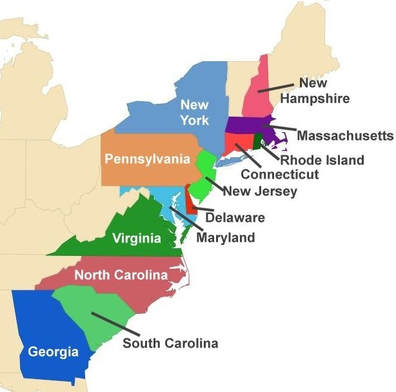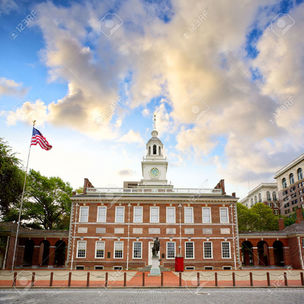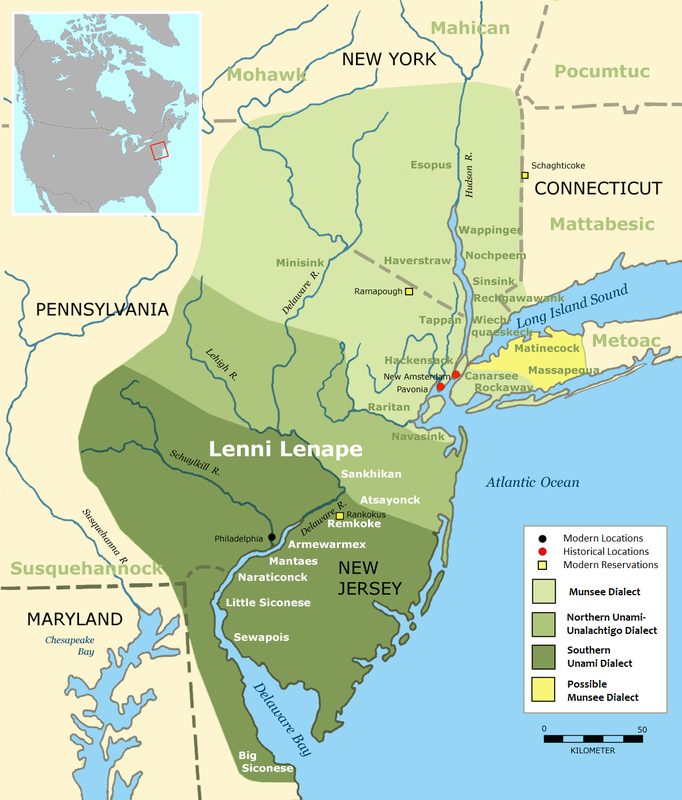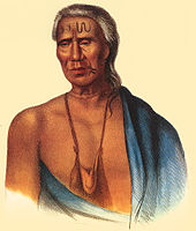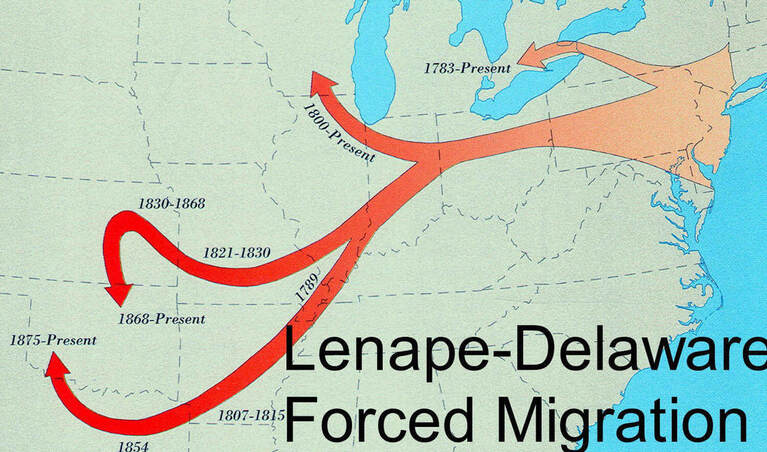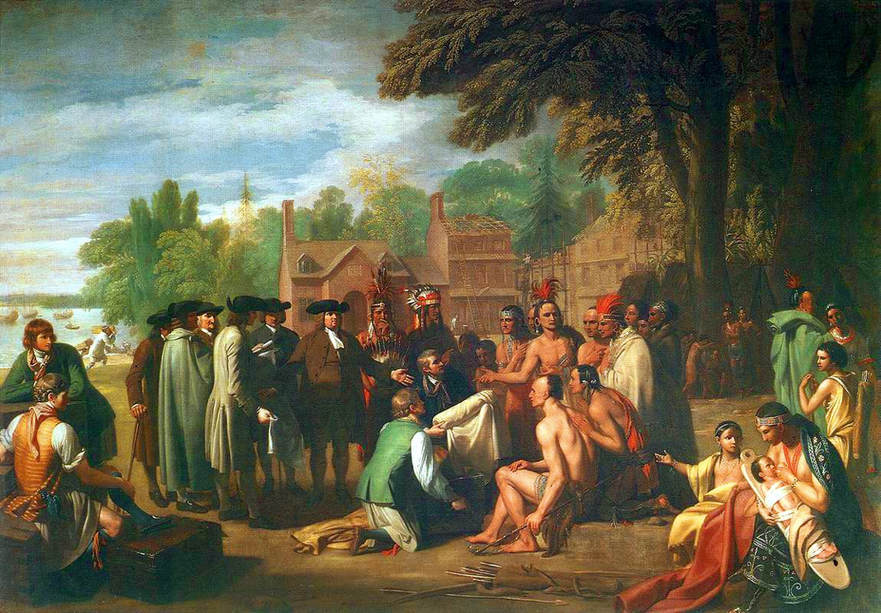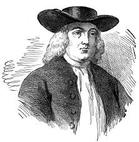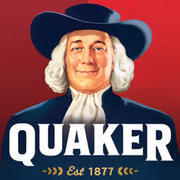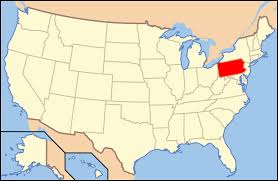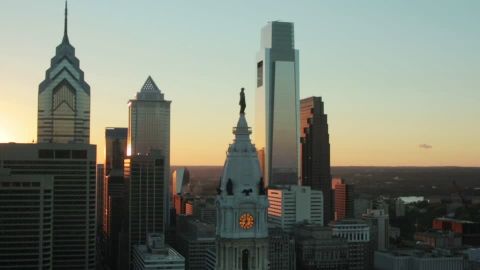Chapitre 1 | De la colonisation à l’indépendance des Etats Unis
Leçon 2 | Early Settlers and Native Americans
The “First Thanksgiving”, by Jean Leon Gerome Ferris
How did the artist picture the 1621 celebrations, and how did he convey his ideas of the event?
His paintings and illustrations depicted notorious [noteworthy] moments in U.S. history, such as when William Penn was greeted [welcomed] by friendly Indigenous people, shown in The Landing of William Penn — 1682.
Description and Analysis of the Painting
More than any other representation of Thanksgiving, Jean Leon Gerome Ferris’s 1912 painting, The First Thanksgiving, 1621, captures the modern, idealised view of English settlers and Native Americans celebrating their first harvest feast in friendship. The celebratory image depicts the superiority of the new arrivals over the locals.
In the painting we can see settlers – who seem to be puritan pilgrims – sharing a meal (the settlers’ first harvest) with Native Americans from the Wampanoag tribe. It was a common mistake at the time to depict all Indians with feathers when it was something only Plains tribes wore. Plains tribes wore a circle of feathers attached to their back for ceremonies. The Wampanoags did not wear the stereotypical feathered headdresses.
In the painting we can see settlers – who seem to be puritan pilgrims – sharing a meal (the settlers’ first harvest) with Native Americans from the Wampanoag tribe. It was a common mistake at the time to depict all Indians with feathers when it was something only Plains tribes wore. Plains tribes wore a circle of feathers attached to their back for ceremonies. The Wampanoags did not wear the stereotypical feathered headdresses.
According to the legend, when the first British settlers (mostly Puritans) arrived in North America (Plymouth colony) half of them died of starvation. So, Native Americans taught them how to grow vegetables and other plants that were unknown to Europeans. The Wampanoag helped the Pilgrims obtain food. They taught them to grow crops and showed them the best places to fish. A year later, it is thought that the settlers shared their first harvest with the Native Americans to show them their gratitude.
The painting expresses a joyful and peaceful atmosphere. One woman is smoking the peace pipe. However, there is something quite striking or shocking about the whole scene. Indeed, The Indians are sitting down – kneeling down as to beg for food – whereas the settlers are standing up. The Indians are placed on the same footing as the dog – a spaniel [it is known that one arrived on the Mayflower]-
and the children. The picture’s message is quite clear: New World men are equal in development to Old World children and animals. The Amerindians are infantilised. It is as if they could not take care of themselves and had to rely on the European settlers.
and the children. The picture’s message is quite clear: New World men are equal in development to Old World children and animals. The Amerindians are infantilised. It is as if they could not take care of themselves and had to rely on the European settlers.
Conclusion
To some extent it can be said that this painting portrays the settlers in a rather positive light. The painting was made in 1915 to legitimize the pilgrims’ behaviour of the past towards the Native Americans, and find justification for the glory of Thanksgiving.
Contrary to the Thanksgiving myth, the Pilgrim-Wampanoag encounter was no first-contact meeting. Rather, it followed a string of bloody episodes since 1524 in which European explorers seized Wampanoags to be sold into overseas slavery or to be trained as interpreters and guides.
Contrary to the Thanksgiving myth, the Pilgrim-Wampanoag encounter was no first-contact meeting. Rather, it followed a string of bloody episodes since 1524 in which European explorers seized Wampanoags to be sold into overseas slavery or to be trained as interpreters and guides.
Document 2 : "Freedom from Want" - Painting by Norman Rockwell - 1942
|
Freedom from Want – Thanksgiving Family Gathering.
This document which was given to me is one of the most famous /well-known painting about Thanksgiving by Norman Rockwell from 1942 entitled “Freedom from want”. A family can be seen and they are sharing a thanksgiving dinner (a turkey can be seen on a tray - which is the traditional thanksgiving meal). The grandmother is bringing the meat and she is wearing an apron and specs. The grandfather is wearing a suit and he is looking over the whole family. Three generations can be identified around the table and they seem joyful (they are smiling and laughing) and happy / merry / glad. The atmosphere is quite / rather friendly and enjoyable. They seem flawless (perfect) and the stereotype of the wealthy middle-class traditional American family. We have the impression that everything is overdone, fake. |
Informations contextuelles (page Wikipedia):
- À l'Abri du besoin (titre original : Freedom from Want), également connu sous les noms du Tableau de Thanksgiving ou de Je serai à la maison pour Noël (The Thanksgiving Picture ou I'll Be Home for Christmas), est un tableau peint en 1942 par le peintre américain Norman Rockwell. Il fait partie d'une série de quatre célèbres peintures à l'huile appelées Les Quatre Libertés.
- L’œuvre fut inspirée par le discours sur l'état de l'Union de 1941 du Président des États-Unis Franklin D. Roosevelt, connu sous le titre de Discours des Quatre Libertés.
- Le tableau fut peint en Novembre 1942 et publié dans le numéro du 6 mars 1943 du Saturday Evening Post. Tous les personnages représentés dans le tableau étaient des amis et parents de Norman Rockwell dans la ville Arlington, dans le Vermont, qui ont été photographiés séparément puis peints au sein de la scène.
- Bien que l'image ait été populaire à l'époque aux États-Unis et qu'elle le reste encore aujourd'hui, elle provoqua un certain ressentiment en Europe où les peuples affrontaient alors les difficultés d'un temps de guerre.
The Mayflower
The Mayflower and the Origins of Thanksgiving
The Mayflower was a boat/a ship and more precisely a merchant ship. But, in 1620 the Mayflower was used as a passenger ship. There were 102 of them and they called themselves “Saints”, “Separatists” or “Pilgrims”. They came from southern England and they lacked religious freedom. They refused to give allegiance to the Church of England. In other words, they didn’t agree with the national religion and they escaped / ran away from religious persecution.
They first stopped in Holland but they didn’t stay over there because they were suffering from religious discrimination once again. Indeed, they were given low-paying jobs and were excluded from the society. Thus, they sailed across the Atlantic Ocean to settle in the New World.
After a-two-month-long journey/ voyage in the worst conditions possible, they reached the shore and met/ encountered Natives. The first year, many people died of starvation and the Indians helped them out. A year later, they shared their first harvest/ crops and formed an alliance with Native Americans and eventually celebrated a three-day-long feast.
The Mayflower was a boat/a ship and more precisely a merchant ship. But, in 1620 the Mayflower was used as a passenger ship. There were 102 of them and they called themselves “Saints”, “Separatists” or “Pilgrims”. They came from southern England and they lacked religious freedom. They refused to give allegiance to the Church of England. In other words, they didn’t agree with the national religion and they escaped / ran away from religious persecution.
They first stopped in Holland but they didn’t stay over there because they were suffering from religious discrimination once again. Indeed, they were given low-paying jobs and were excluded from the society. Thus, they sailed across the Atlantic Ocean to settle in the New World.
After a-two-month-long journey/ voyage in the worst conditions possible, they reached the shore and met/ encountered Natives. The first year, many people died of starvation and the Indians helped them out. A year later, they shared their first harvest/ crops and formed an alliance with Native Americans and eventually celebrated a three-day-long feast.
| |||||||
The Original 13 Colonies
|
L'évolution du drapeau Américain:
|
The Grand Union Flag:
Utilisé pour la première fois sur un navire le 3 décembre 1775 par l'officier John Paul Jones, d'après ses propres dires, il a été utilisé par la suite durant la Guerre d'Indépendance, notamment par le général George Washington : il fut hissé en sa présence lors de la lecture publique de la Déclaration d'indépendance, le 6 juillet 1776 à New York. Ce drapeau était constitué des treize bandes horizontales blanches et rouges, (qui représentaient les 13 premières colonies) et du drapeau du Royaume Uni de l'époque (avant l'ajout de la croix de Saint Patrick représentant l'Irlande.) |
L'histoire la plus répandue concerne Betsy Ross (1752-1836), une fabricante de drapeaux de Philadelphie. Son petit-fils, Williams J. Canby, raconta, dès 1870, qu'en juin 1776 le Congrès (=parlement américain) avait demandé à sa grand-mère de coudre les premières étoiles et bandes selon un modèle fourni au préalable. Toutefois, il ne fut retrouvé aucune trace de ces allégations, et il semble très improbable qu'un tel symbole ait pu être commandé si longtemps avant la Déclaration d'Indépendance.
Une autre affirmation plus plausible vient de Francis Hopkinson (1737-1791), un signataire de la Déclaration d'Indépendance qui, en 1780, factura le Congrès pour avoir conçu le drapeau. Bien que le Congrès refusât de payer sa note en arguant que beaucoup de gens avaient contribué à la création, il ne réfuta pas vraiment sa revendication.
Une autre affirmation plus plausible vient de Francis Hopkinson (1737-1791), un signataire de la Déclaration d'Indépendance qui, en 1780, factura le Congrès pour avoir conçu le drapeau. Bien que le Congrès refusât de payer sa note en arguant que beaucoup de gens avaient contribué à la création, il ne réfuta pas vraiment sa revendication.
|
Le drapeau actuel: The Star-Spangled Banner (La Bannière étoilée)
|
Les 13 premiers états des Etats Unis:
The Lenni Lenape Indians (aussi appelés les Delaware Indians)
- The Lenape (len-AH-pay) or Delaware Indians lived in an area they called “Lenapehoking,” which means “Land of the Lenape.” Their land included all of what is now New Jersey, eastern Pennsylvania, southeastern New York State, northern Delaware and a small section of southeastern Connecticut. As part of the Eastern Woodlands, Lenapehoking had many rivers, streams and lakes and was densely forested and rich in wildlife.
- Some of the Lenape lived in large villages of two to three hundred people, but most of them lived in small bands of 25 to 50 people.
- Families were important to the Lenape Indians. There were strong ties between parents and children, and among all the related families that made up the clan.
- The chiefs were chosen for their behavior, skill in speaking, honesty, and ability to make wise decisions.
- Cette carte ci-dessous indique le territoire des Lenni Lenape à l'époque des premiers colons britanniques (en vert).
- Les nuances de vert symbolisent les différents dialects parlés par les Lenni Lenape.
- Cette carte ci-dessous représente les migrations forcée des Lenapes au fur et à mesure de la "Conquête de l'Ouest".
- "Present" signifie que des tribus Lenape vivent toujours dans cette région / cet état. (Oklahoma par exemple).
William Penn and the Lenape Indians
- Etude du tableau de Benjamin West (1771) - réalisée par les élèves.
This document is a painting entitled « William Penn and the Lenape Indians ». It was painted by Benjamin West and it dates from 1771. This canvas represents the encounter between the settlers and the Delaware Indians in 1682.
On the one hand, the white European settlers can be seen on the left and on the other hand the darker-skinned Indians to the right. They are gathered under a tree called an elm tree. That tree is a symbol of liberty and rebellion because the pilgrims were religious rebels. They had run away from / escaped religious persecution in England. They had been protestant resistant. A disparity between the two communities can be spotted in the painting such as their way of life, culture and clothing. The separatists are dressed in traditional outfits. They are wearing hats, tailcoats whereas the natives were almost naked / they were hardly dressed.
The leader of the Lenape donned a feather hair dress. There are two settlers who are kneeling down and they are giving a gift wrapped up in a white cloth. This painting is reminiscent of a religious image, more precisely the nativity scene.
The Indians are sitting on the ground while the settlers are standing up. The atmosphere is rather friendly and joyful. William Penn is the leader of the settlers and he is buying the land. This painting represents the first peace treaty with the natives.
William Penn is one of the few that treated the Indians with respect. Indeed, the other Pilgrims pushed the Indians west from Pennsylvania to Oklahoma. This was called the Trail of Tears.
On the one hand, the white European settlers can be seen on the left and on the other hand the darker-skinned Indians to the right. They are gathered under a tree called an elm tree. That tree is a symbol of liberty and rebellion because the pilgrims were religious rebels. They had run away from / escaped religious persecution in England. They had been protestant resistant. A disparity between the two communities can be spotted in the painting such as their way of life, culture and clothing. The separatists are dressed in traditional outfits. They are wearing hats, tailcoats whereas the natives were almost naked / they were hardly dressed.
The leader of the Lenape donned a feather hair dress. There are two settlers who are kneeling down and they are giving a gift wrapped up in a white cloth. This painting is reminiscent of a religious image, more precisely the nativity scene.
The Indians are sitting on the ground while the settlers are standing up. The atmosphere is rather friendly and joyful. William Penn is the leader of the settlers and he is buying the land. This painting represents the first peace treaty with the natives.
William Penn is one of the few that treated the Indians with respect. Indeed, the other Pilgrims pushed the Indians west from Pennsylvania to Oklahoma. This was called the Trail of Tears.
- The Wampum Belt (1682)
It was made in 1682 by Indians for the settlers. It is a welcome gift but above all it is actually the very first peace treaty between natives and British settlers. It was made to break the language barrier (none of them could speak each other‘s language).
William Penn and the Holy Experiment
|
Portrait
de W. Penn |
Marque de céréales
à l'effigie de William Penn |
Pennsylvania State
|
Statue de William Penn au sommet de la mairie de Philadelphie
|
Télécharger les documents étudiés en cours:
| ||||||||||||||
Document complémentaire sur William Penn & Philadelphie (article du Guardian):
| William Penn & His City- Guardian article.pdf | |
| File Size: | 651 kb |
| File Type: | |
Reportage sur William Penn & The Holy Experiment:
|
|
Lien youtube: https://www.youtube.com/watch?v=-31iitsBAh0&t=698s

